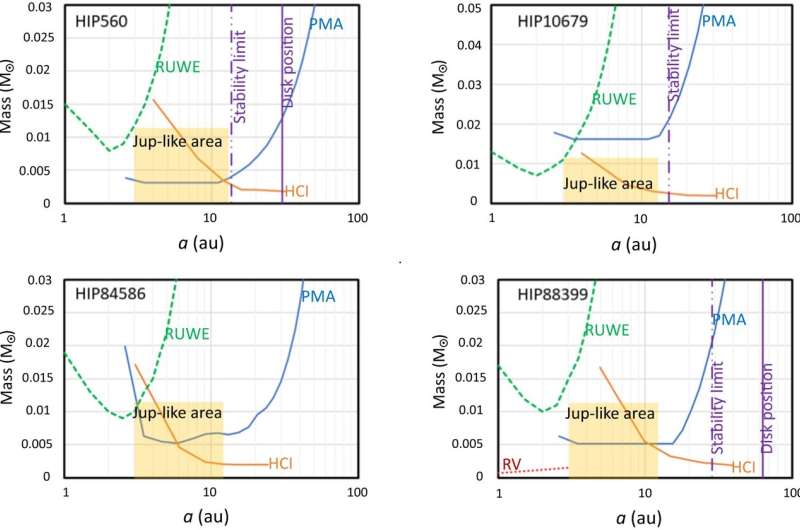October 18, 2023 report
This article has been reviewed according to Science X's editorial process and policies. Editors have highlighted the following attributes while ensuring the content's credibility:
fact-checked
peer-reviewed publication
trusted source
proofread
Study suggests gas giants may be more common than thought in some parts of the galaxy

A team of astronomers and astrophysicists from INAF-Osservatorio Astronomico di Padova, Vicolo dell'Osservatorio 5, Universidad Diego Portales, the University of Exeter and Sorbonne Université has found evidence that gas giants may be more common than thought in some parts of the galaxy. In their study, reported in the journal Nature Communications, the group analyzed the mass and movement of 30 stars in the Beta Pictoris Moving Group.
Prior research has suggested that gas giants, similar in some respects to Jupiter, should form easily around stars with properties similar to the sun. But finding them has proven to be difficult, leading some in the planetary community to wonder if these assumptions have been wrong.
For this study, the research team took a new approach—they used a new type of high-contrast imaging to focus on a grouping of stars relatively near to Earth called the Beta Pictoris Moving Group. Prior research has shown that the small cluster of stars move together through space.
In their work, the research team focused on 30 stars in the group, seeking to determine their mass and movements. The team chose the group for several reasons: It is relatively small, there is a lot of space between the stars, and they seem to be rather young. They reasoned that gas giants might be more likely to develop in such places. The team found evidence of the potential existence of gas giants in 20 of the star systems they studied—all of which, if they do exist, orbit far from their star.
More work is required to confirm their findings. The researchers also suggest that gas giants appear more likely to form in small, low population groups, which have not typically been the focus of intense research efforts. And that, they point out, suggests that there may be many more gas giants than previously thought.
More information: Raffaele Gratton et al, Jupiter-like planets might be common in a low-density environment, Nature Communications (2023). DOI: 10.1038/s41467-023-41665-0
Journal information: Nature Communications
© 2023 Science X Network





















